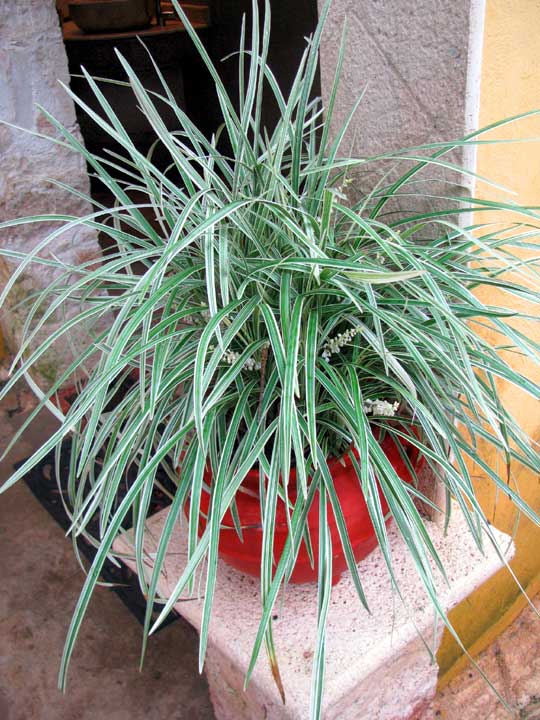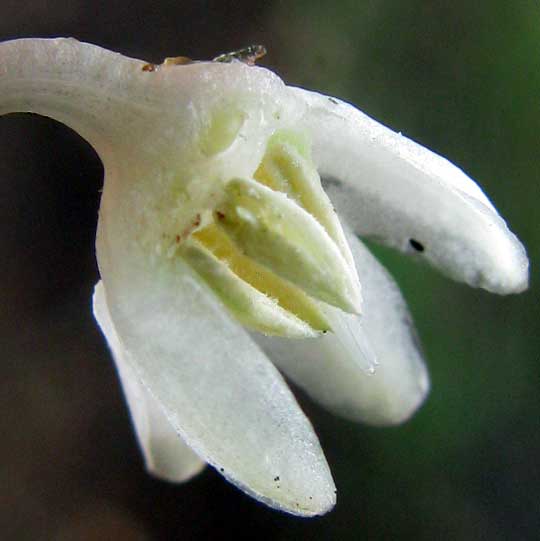Excerpts from Jim Conrad's
Naturalist Newsletter
from the July 25, 2010 Newsletter issued from Hacienda Chichen Resort beside Chichén Itzá Ruins, central Yucatán, MÉXICO; limestone bedrock, elevation ~39m (~128ft), ~N20.676°, ~W88.569°
LILY TURF FLOWERING
Here and there around Hacienda Chichen there's an attractive plant potted that's begun flowering. At first I thought it was an ornamental, variegated grass, but as soon as the flowers appeared it was clear that they were something else. You can see one of the plants with its racemes of white flowers below:

A close-up of a 3/16th-inch-long flower (5 mm) with one side removed to reveal its sexual parts is below:

At first I thought this was Liriope muscari, a species looking very much like this and commonly grown up north. However, the flowers aren't right for that. Mainly, in the genus Liriope the stamens' filaments, or stems, are about as long as the blunt anthers. However, in the above flower picture you can see that the filaments are very short, and the anthers are somewhat pointed. Also, in Liriope, the ovary is completely "superior" -- the walls of the corolla are not attached to the ovary. The flower in the picture shows a corolla attached to a broad section of the flower's lower ovary.
This is a member of the genus Ophiopogon, often confused with the better known Liriope. Best I can tell by matching pictures of our plant with what's on the Internet, this is OPHIOPOGON INTERMEDIUS 'ARGENTEOMARGINATUS,' sometimes marketed as Aztec Grass and more generally known as one of many kinds of lily turfs.
Both Liriope and Ophiopogon have been shifted from family to family as genetic studies continue trying to figure things out. I was taught that they were members of the Lily Family but the last I heard they'd been shifted to the Asparagus Family.